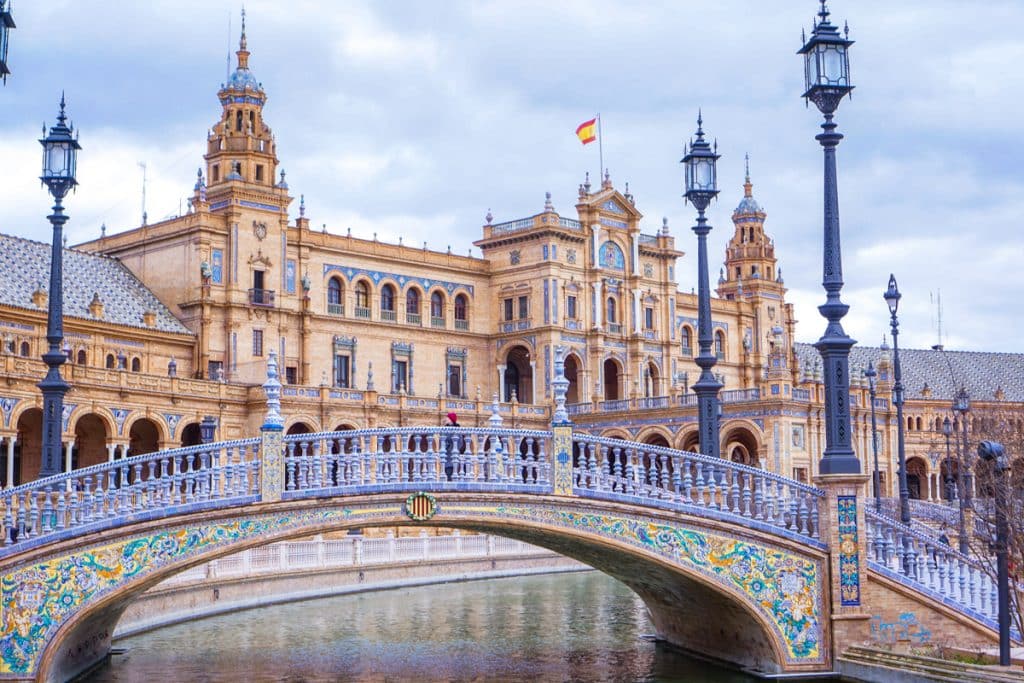Seville, Spain: Where History, Flamenco, and Orange Blossoms Converge

In the heart of Andalusia, where the Guadalquivir River meanders through sun-soaked landscapes, lies the enchanting city of Seville. As the capital of the region and the fourth-largest city in Spain, Seville embodies the quintessence of Spanish culture, from its rich historical heritage to the passionate rhythms of flamenco and the aromatic allure of orange blossoms. Join us on an extensive journey through the labyrinthine streets, historic landmarks, and vibrant traditions that define the captivating allure of Seville.
Historical Heritage and Architectural Marvels:
Seville’s history is a tapestry woven with threads from various civilizations, each leaving an indelible mark on the city’s landscape. The Alcázar of Seville, a UNESCO World Heritage site, stands as a testament to this historical richness. Originally constructed by the Moors in the 10th century, the Alcázar is a captivating blend of Mudejar, Gothic, Renaissance, and Baroque styles. Its intricate tilework, lush gardens, and ornate palaces offer visitors a glimpse into the opulence of bygone eras.
The Seville Cathedral, the largest Gothic cathedral in the world, rises majestically alongside the Alcázar. Built on the site of a former mosque, the cathedral’s imposing structure and the iconic Giralda Tower, which was once the mosque’s minaret, celebrate Seville’s transition from Islamic rule to Christian dominance.
Gardens of Paradise:
Seville’s love affair with gardens is evident in the lush green spaces that dot the city. The Maria Luisa Park, adjacent to the Plaza de España, is a sprawling oasis of palm-lined avenues, fountains, and tiled alcoves. The park’s botanical diversity, combined with the Plaza de España’s semi-circular building adorned with azulejos (painted ceramic tiles), creates a harmonious retreat in the heart of the city.
The Real Alcázar gardens, an extension of the palace, transport visitors to an enchanted realm where meticulously manicured hedges, vibrant flowers, and the soothing sound of fountains create a serene atmosphere.
The Gypsy Heartbeat of Flamenco:
Seville pulsates with the passionate rhythms of flamenco, the quintessential Spanish art form that intertwines music, dance, and emotion. The historic district of Triana, situated across the Guadalquivir River, is a cradle of flamenco traditions. Tablaos, such as El Tablao de Flamenco El Arenal, and intimate venues like Casa de la Memoria, offer authentic flamenco performances that stir the soul.
The Triana neighborhood, with its narrow streets, colorful houses, and vibrant atmosphere, is steeped in the flamenco tradition. Here, the legacy of gypsy culture and flamenco artisans thrives, creating an immersive experience for those seeking the heartbeat of this passionate art form.
The Aroma of Orange Blossoms:
Seville is synonymous with the intoxicating fragrance of orange blossoms. The city’s streets are lined with thousands of bitter orange trees, their delicate white blossoms perfuming the air in spring. The scent envelops iconic landmarks like the Patio de los Naranjos at the Seville Cathedral and the courtyards of the Alcázar, adding a sensory dimension to the city’s charm.
The bitter oranges, known as naranjas agrias, find their way into Seville’s culinary landscape. Locals use them to make the traditional orange marmalade, a sweet treat that captures the essence of Seville’s fragrant orchards.
Semana Santa and Feria de Abril:
Seville’s cultural calendar is marked by two iconic events that encapsulate the city’s religious fervor and celebratory spirit. Semana Santa, or Holy Week, sees elaborate processions winding through the streets, each paso (float) depicting scenes from the Passion of Christ. The city is draped in incense and solemnity during this time, attracting both locals and visitors who participate in or witness the deeply rooted traditions.
Feria de Abril, held two weeks after Semana Santa, transforms Seville into a kaleidoscope of colors, music, and revelry. The fairgrounds, adorned with rows of casetas (colorful marquees), become lively venues for flamenco, traditional music, and dance. Locals, dressed in traditional Andalusian attire, celebrate late into the night, creating an atmosphere of joyous camaraderie.
Culinary Traditions and Tapas Culture:
Seville’s culinary scene is a tantalizing journey through Andalusian flavors, where traditional dishes are infused with local ingredients and a dash of innovation. Tapas culture thrives in Seville, inviting diners to savor an array of small plates showcasing the region’s culinary diversity. The bustling streets of Barrio Santa Cruz and Arenal are lined with tapas bars, each offering a unique twist on classic dishes.
Seville’s Mercado Lonja del Barranco, a contemporary food market housed in a historic building, showcases the best of Andalusian cuisine. From Iberian ham and salmorejo (cold tomato soup) to fresh seafood and local cheeses, the market is a gastronomic haven that reflects the city’s commitment to culinary excellence.
The Guadalquivir River and Triana:
The Guadalquivir River, which winds its way through Seville, plays a central role in the city’s identity. The iconic Triana Bridge connects the historic district of Triana to the city center, providing breathtaking views of the river and the cityscape. Triana, with its vibrant street life, ceramic workshops, and traditional tapas bars, is a neighborhood that embraces its gypsy and flamenco heritage.
The riverside promenade, Paseo de las Delicias, invites leisurely strolls along the riverbanks. Locals and visitors alike enjoy boat tours on the Guadalquivir, offering a unique perspective of Seville’s landmarks, including the Torre del Oro, a medieval watchtower that once guarded the city’s port.
Conclusion:
Seville, with its historical grandeur, flamenco heartbeat, fragrant orange blossoms, and culinary delights, stands as a living testament to the rich tapestry of Spanish culture. As the sun sets over the Guadalquivir River, casting a golden glow on the city’s historic landmarks, Seville reveals itself as a city where tradition dances with modernity, and where every cobbled street narrates a story of centuries past. In the embrace of its historic monuments, the echoes of flamenco, and the fragrance of orange blossoms, Seville invites travelers to immerse themselves in the passionate and timeless spirit of Andalusia.




